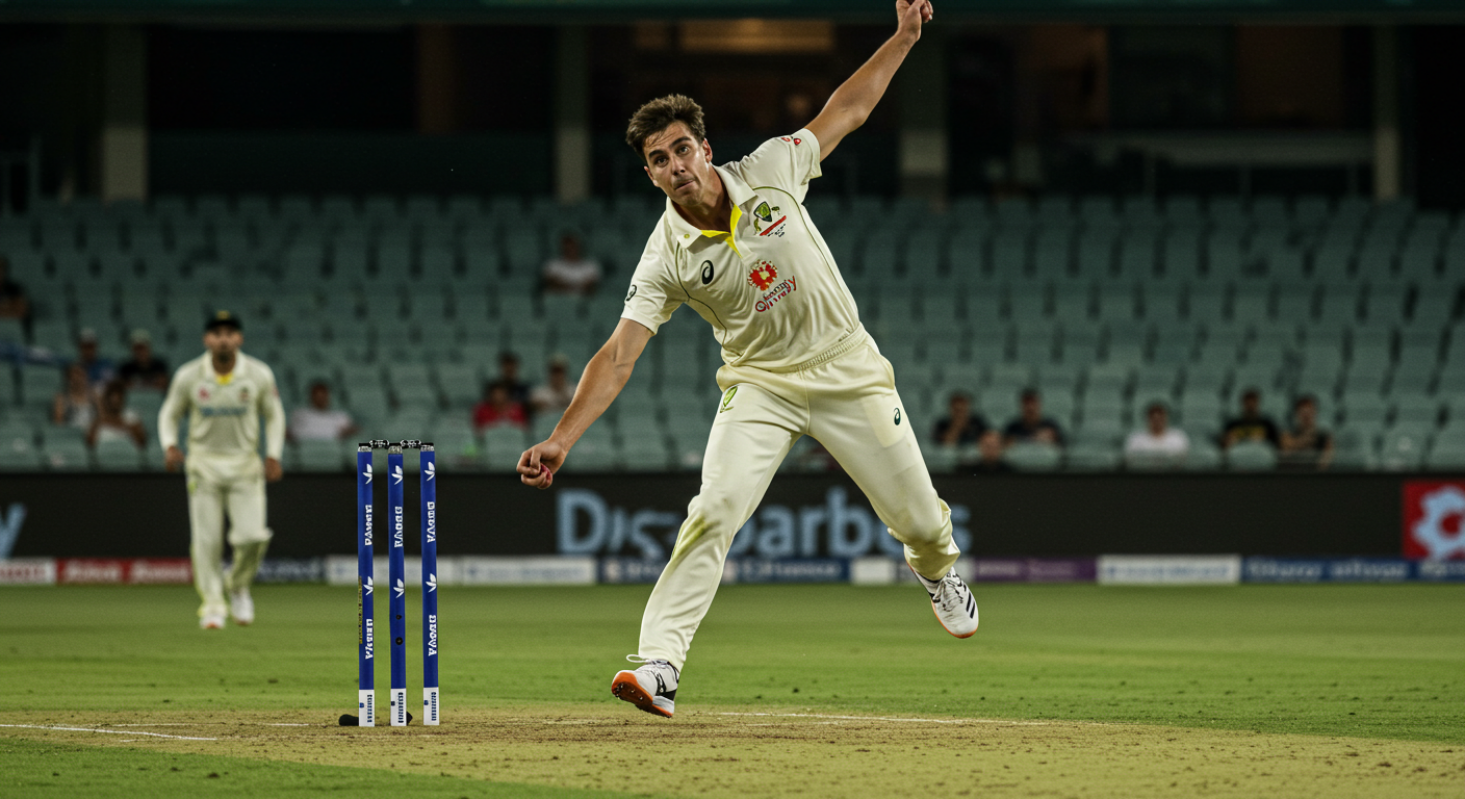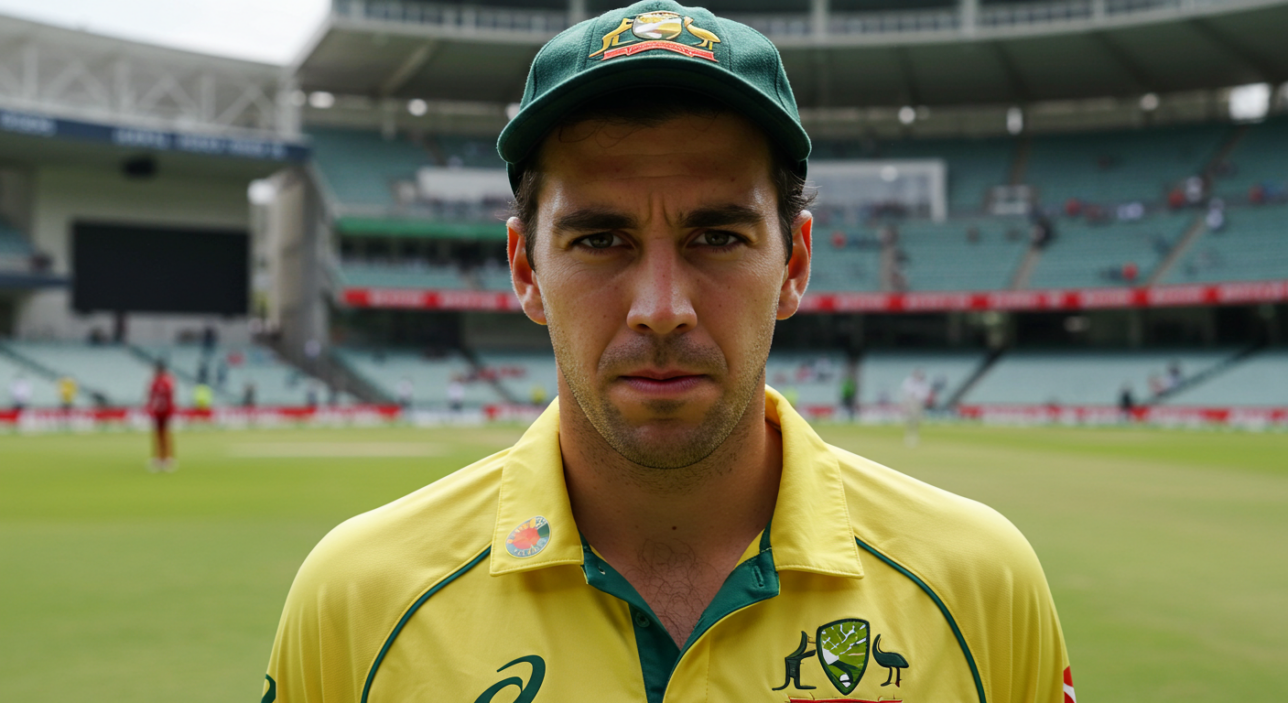
Pat Cummins and the Rise of Australia’s Thinking Fast Bowler
Fast bowling in Australia has long been framed as a matter of brute force — short, sharp spells of aggression, chin music and swagger. But Pat Cummins has redrawn the blueprint. He bowls with pace, yes, but also with purpose. He leads not just with venom, but with vision.
This is not to say he’s soft — far from it. Cummins hits the deck hard, can bowl long spells, and owns a sharp bouncer. But what separates him is not just what he delivers, but when and why. He reads batters, plots dismissals, and understands momentum shifts like a seasoned chess player in spikes.
His journey hasn’t been straightforward. There were injuries, doubts, seasons lost. But he returned each time more complete — physically, tactically, emotionally. From debuting as a teenage tearaway to captaining Australia in three formats, Pat Cummins has become the prototype of the modern fast bowler: quick, strategic, and calm under fire.
This article traces how Cummins broke with Australian tradition without rejecting it — and in doing so, became one of the most influential cricketers of his generation.
From Teenage Debutant to Vanishing Act

When Pat Cummins burst onto the scene in 2011, he looked like the future. Barely 18, he took 7 for 117 in a Test debut at the Wanderers — raw, rapid, electric. Australia won the match. A star was born. But then, silence.
Back stress fractures. Side strains. Season after season disappeared into rehab. Cummins, once fast-tracked into greatness, was now caught in slow motion. For six years, he didn’t play another Test. For many, that gap would’ve been fatal. For Cummins, it became a period of study. Of watching, listening, recalibrating.
He didn’t just return to fitness — he returned with insight. He’d observed how batters adapted. How game plans were built. He’d dissected his own action, balanced workload, and developed a second wind not based on pace alone but on control.
When he returned to the side in 2017, there was a maturity to his bowling. His lengths were fuller. His aggression was more focused. He had the same pace, but now with direction. It wasn’t raw talent anymore — it was considered risk.
Cummins didn’t just come back as a fast bowler. He came back as a tactician — someone who didn’t just want to bowl fast, but wanted to out-think a batter before he outpaced him.
Redefining the Role: Intelligence as a Weapon
Australian fast bowlers have never been short on menace. But Pat Cummins has made something else fashionable: subtlety. He’s not bowling to hurt; he’s bowling to expose flaws.
His success isn’t built on raw hostility. It’s built on adaptability. Against subcontinent batters, he angles the ball in, making them play straight. Against Englishmen, he brings it across just enough to nick them off. His bouncers aren’t just tests of courage — they’re setups. Part of a sequence, not just a release of energy.
That’s what makes Cummins so difficult to face. He’ll bowl 135kph at a good length and still feel unplayable — not because he’s terrifying, but because he’s precise. His ability to hold lines, vary seams, and shift gears without warning turns routine spells into relentless pressure.
He studies. Before a series, before a session. He’ll know where a batter gets stuck in the crease, where the bat comes down late, where the backlift betrays indecision. And he’ll work that zone for hours.
In a country that once prized bowling fast over bowling smart, Cummins has proved you can do both — and that intelligence isn’t a compromise. It’s a competitive edge.
Captaincy Without the Snarl

Australia has always had fast bowlers. But fast bowlers as captains? That was a risk. Historically, it’s been a job for batters — men seen as stable, composed, available for long stretches. Bowlers are supposed to be fire and fury. Not the ones setting fields.
So when Pat Cummins was named Test captain in late 2021, eyebrows lifted. Could a paceman manage tactics, workload, and man management all at once? Cummins didn’t answer the question loudly. He just started leading.
What’s been striking is how little he changed. He didn’t snarl. He didn’t bark. He kept speaking softly, setting fields with clarity, defending his players with calm, and bowling with the same intensity. His style didn’t adjust to the role — the role adjusted to him.
On the field, he’s decisive. Off it, he’s reflective. He talks more about responsibility than aggression. And when controversy comes — as it always does in Australian cricket — he doesn’t throw fuel on it. He lets the cricket do the talking.
And yet, he hasn’t softened. His spells still bite. His yorkers still break stumps. But now, every delivery seems to come from a broader strategy. Cummins isn’t just a captain who bowls — he’s a bowler who captains with clarity and conviction.
The Ashes and the Art of Controlled Aggression
In Ashes history, aggression is currency. Lillee and Thomson tore through England with violence. Mitchell Johnson did it with outright fear. Pat Cummins, though, brought a different kind of fire: cool, deliberate, and unrelenting.
He didn’t need theatrics. He didn’t need chirping or chest-beating. Cummins dismantled England with clarity of plan and quality of execution. His lines were exact. His short balls were purposeful. He didn’t rely on chaos — he created doubt.
In the 2023 series, that composure was tested. England’s ‘Bazball’ revolution challenged tradition, flung open the field, and made chaos look like control. Cummins didn’t panic. He adapted.
He shifted fields mid-over. He slowed the game when it needed slowing. And when the chance to attack returned, he did so with classic Australian ferocity — but underpinned by timing, not impulse.
The most telling moment? The Edgbaston chase. Cummins, with bat in hand, not only weathered the storm but sealed the win himself, not with flourish, but with quiet nerve. A captain doing the job — not for drama, but because it needed doing.
That’s the thing with Cummins. He doesn’t lead with noise. He leads with decisions that hold under pressure. And in doing so, he’s quietly authored a new chapter in the long, loud history of Ashes cricket.
Managing the Body, Extending the Brain

Fast bowling is unsustainable by design. The action breaks the body. The calendar breaks the rhythm. Few make it past 30 without visible decline. And yet Pat Cummins — once the face of fragility — has quietly become the model of durability.
It wasn’t luck. It was science, planning, and restraint. Cummins learned the hard way how much a back can take. He rebuilt not just his action but his philosophy. No spells for ego. No unnecessary overs for show. He doesn’t bowl to prove he’s quick. He bowls to be effective.
It’s why he rarely looks spent. He’s not overused, because he manages his own peaks. In a generation that’s played across all formats without pause, Cummins has learned to pause deliberately. He rests when others want to push. He recovers when others are chasing tournaments.
And now, as captain, he applies that same wisdom to his team. Workload isn’t just a buzzword — it’s a strategy. He rotates bowlers, understands rhythm, and leads with a sense of long-term responsibility.
That’s what separates Cummins in the modern game. He isn’t sprinting through his career. He’s curating it — with just enough intensity to scare batters, and just enough intelligence to sustain it for years to come.
White-Ball Evolution Without the Noise
Pat Cummins isn’t the poster boy of T20 cricket. He doesn’t have a signature celebration, nor does he feature in every franchise league. But when it comes to white-ball relevance, he’s never been far from the core.
Initially seen as a red-ball specialist, Cummins’ white-ball rise has been tactical. He hasn’t changed who he is — but he’s added layers. Subtle slower balls. Smart field adjustments. A deep understanding of matchups. He isn’t hunting yorkers every over. He’s asking questions: about the pitch, the batters, the moment.
And when it matters — finals, knockouts, powerplays under pressure — Cummins delivers. His role in Australia’s 2023 ODI World Cup win wasn’t headline-grabbing every game, but it was foundational. Spells of pressure. Overs that shifted tempo. A captain who understood when to go and when to hold.
In the shorter formats, where so much is about theatre, Cummins has built his reputation through intent and economy. You don’t always notice him — and that’s exactly when he strikes.
The point is, Cummins doesn’t need to dominate every format. He just needs to remain indispensable in all of them. And somehow, without hype or gimmick, that’s exactly what he’s done.
Leading with Silence in a Loud Era

Cricket captains used to lead with speeches. These days, they often lead with soundbites. But Pat Cummins has led Australia through one of its most successful stretches by doing neither. He doesn’t dominate headlines or dressing rooms. He observes. He listens. He chooses his words — and his moments.
When he speaks, it’s measured. When he’s criticised, he doesn’t lash back. He’s comfortable with contradiction — being a fast bowler who rarely loses his temper, a captain who doesn’t try to control every frame.
His approach might appear soft to those raised on harder edges. But look at the results: Test Championship winner, Ashes retained away, World Cup lifted in India. These aren’t the outcomes of passivity. They’re the results of calmness backed by steel.
He doesn’t push himself into the narrative. And somehow, the narrative finds him anyway. Quiet spells that shift matches. Low-scoring knocks that anchor chases. Leadership that lets others shine and still takes the heat when things go wrong.
In an era where captains are brands and bowlers are expected to roar, Pat Cummins walks in quietly, makes the right call, hits the top of off, and walks away. That, in itself, is a kind of power.
The Legacy of Patience and Precision
Legacy is often built on moments — the celebration, the stare-down, the delivery that lives in memory. Cummins may not always give you the moment. But he’ll give you the match. And, more often than not, the series.
He doesn’t need myth-making. He’s got metrics. He’s the fast bowler who thinks two overs ahead. The leader who doesn’t need theatrics. The modern cricketer who proves that longevity and excellence aren’t mutually exclusive.
He’s dismantled the archetype of the Aussie quick. There’s no need for menace when you have method. No need for intimidation when you have intelligence. He bowls hard, but rarely angry. Leads tough, but never with a clenched jaw.
And that’s what will make Pat Cummins endure. Not the drama. Not the volume. But the outcomes. The way he carries pressure without absorbing it. The way he lets the game breathe — then slowly tightens the grip.
Fast bowling, especially in Australia, has always had a type. Cummins isn’t it. He’s the outlier who made the new standard.
Conclusion: Why Pat Cummins Redefined the Fast Bowler Archetype

Pat Cummins didn’t need to be the loudest or the most feared to become the most effective. In a country obsessed with fast bowling bravado, he brought something different: composure, curiosity, and complete clarity. He didn’t reject the past — he just proved there’s more than one way to bowl quick and lead well.
His rise hasn’t just been about pace. It’s been about decisions. When to bowl full. When to lead from the front. When to let others take the spotlight. He’s done it all without fanfare, and yet with staggering consistency.
As a bowler, he reads the game like a batter. As a captain, he balances aggression with thought. And as a teammate, he’s earned respect not through command, but through presence.
In doing so, Pat Cummins has become the face of a modern fast bowler: powerful, yes — but also principled, strategic, and self-aware. He hasn’t changed himself for the game. He’s changed how the game sees players like him.
The best part? He’s not done yet. Because thinking fast bowlers don’t just burn bright — they last.





